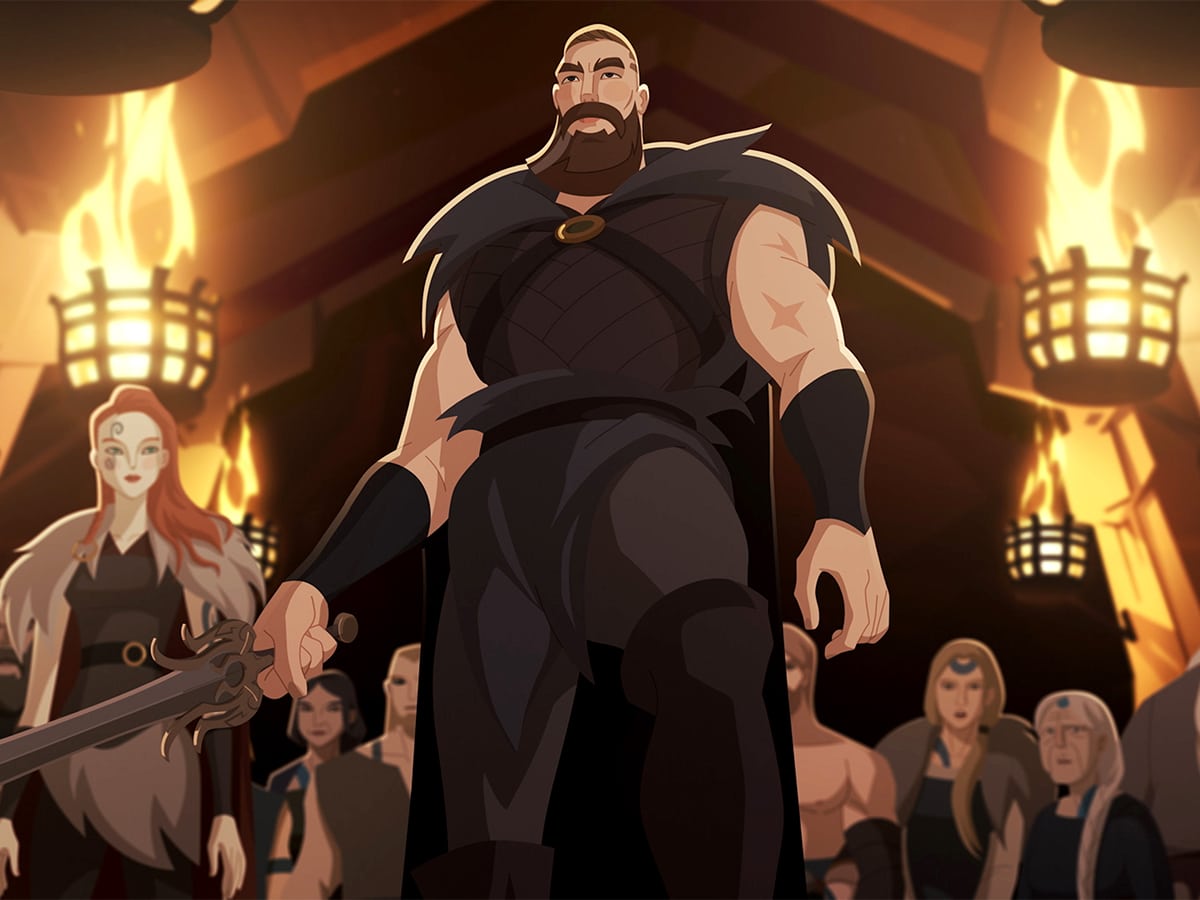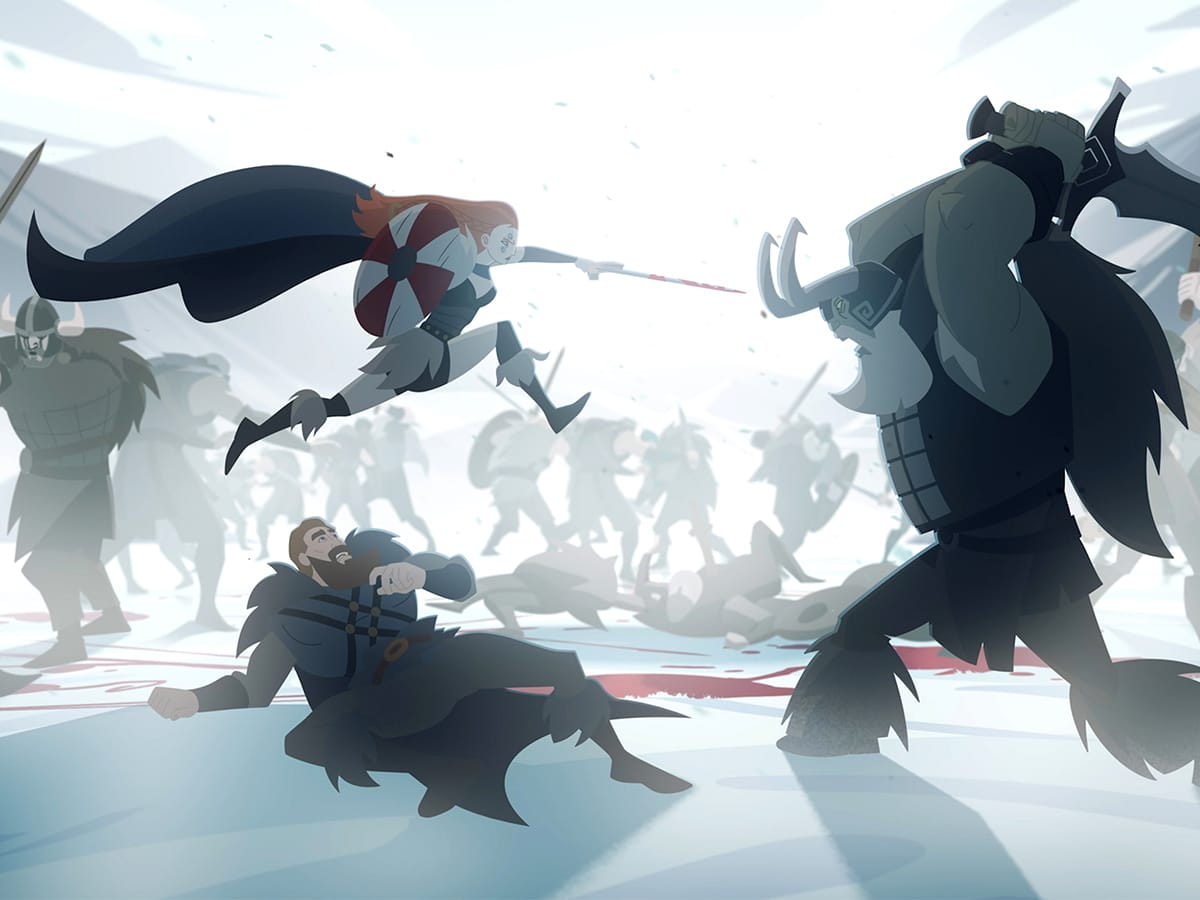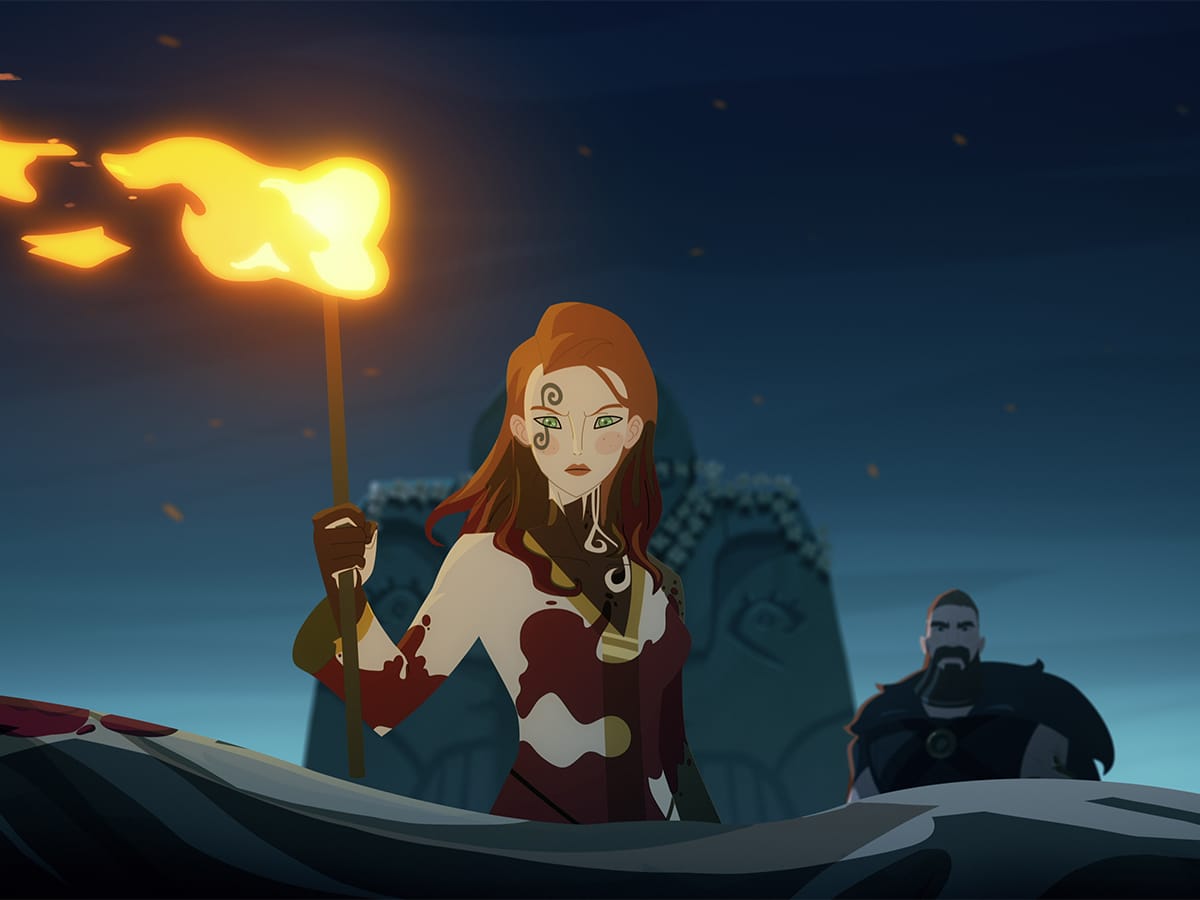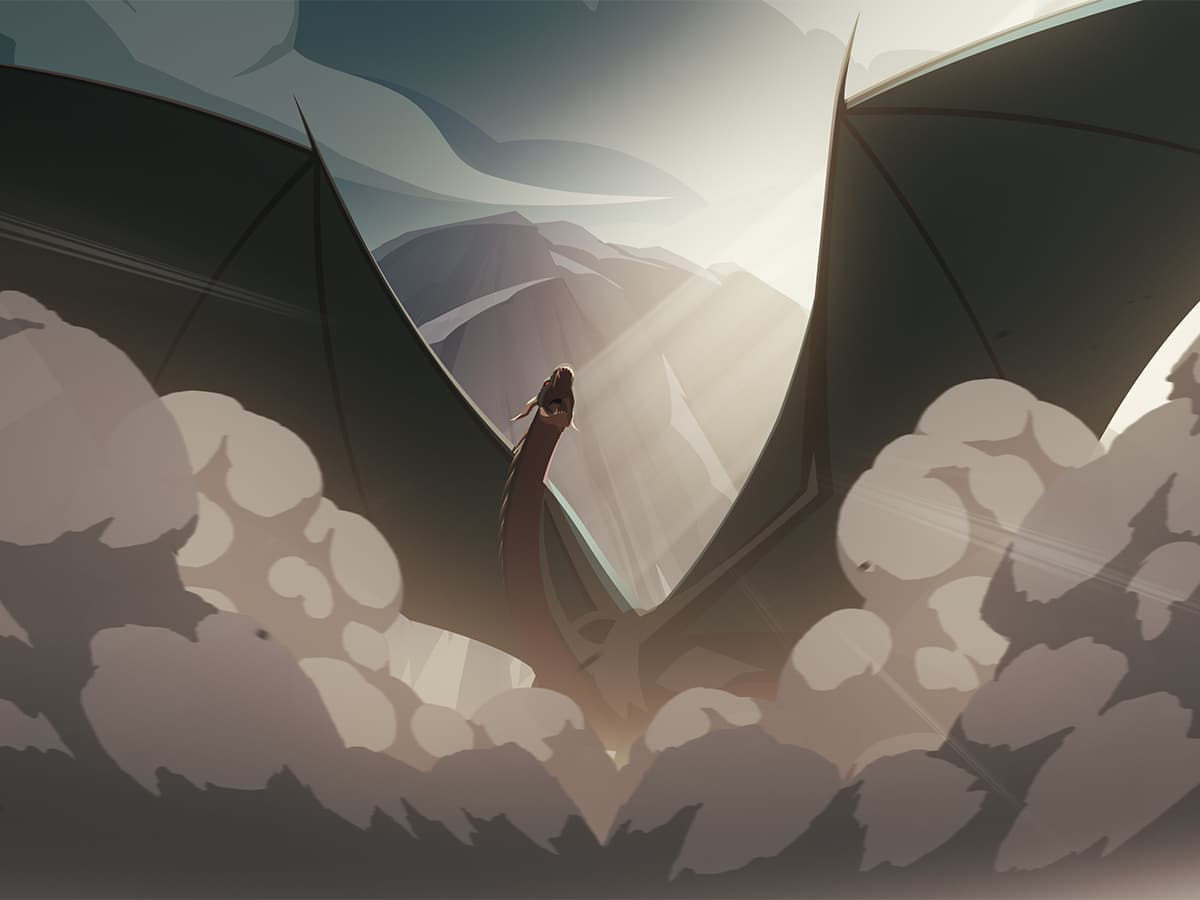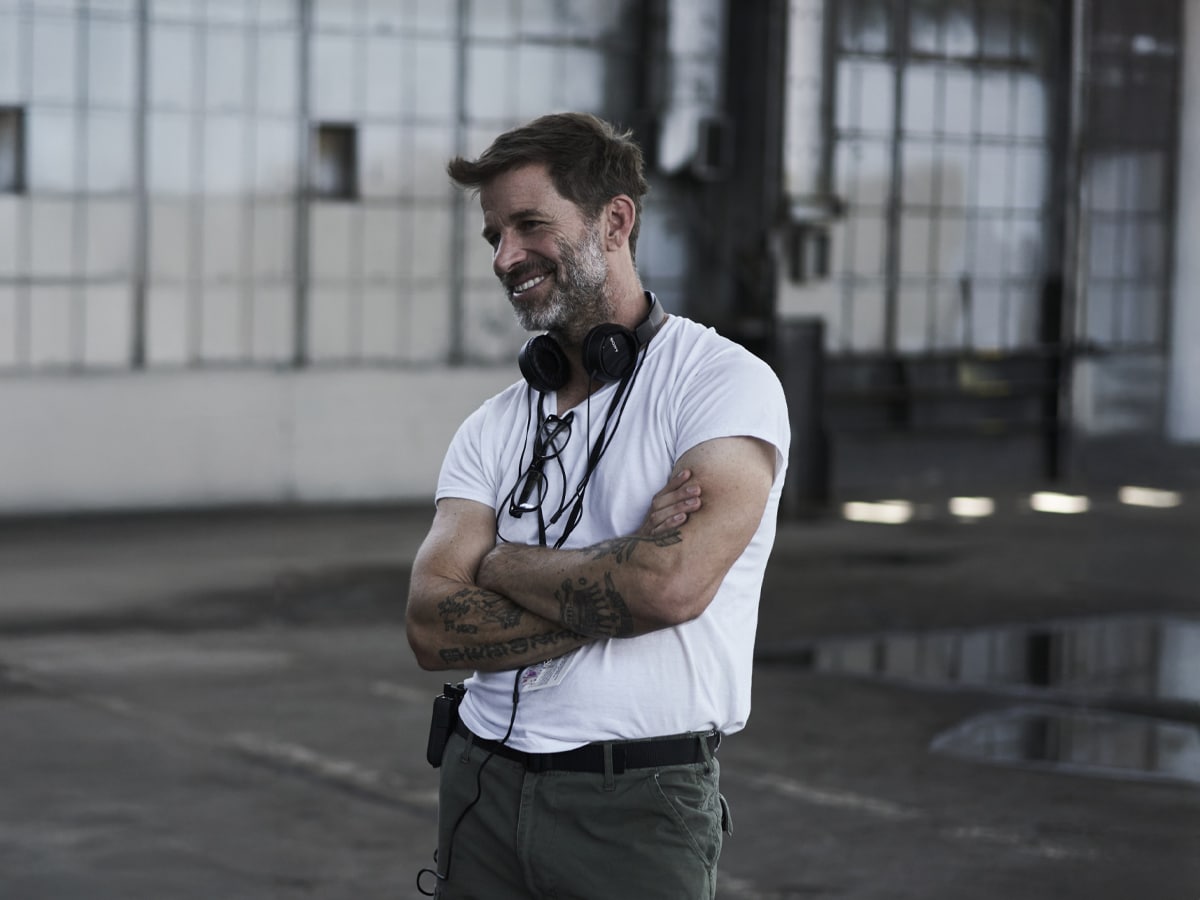There are no two ways about it; Twilight of the Gods has captured our attention. Netflix’s latest adult animated series (and we do mean adult) is a wild, bloody, mythology-inspired ride through a spirited world of gods, giants, dwarves, dragons, and valkyries. Stone Quarry – the production company established in 2004 by filmmaker Zack Snyder, his wife Deborah Snyder and their producing partner Wesley Coller – is behind the Netflix series. Director Zack Snyder, who previously brought his singular vision to 300, Watchmen, Sucker Punch, Justice League, Army of the Dead, and Netflix’s Rebel Moon saga, co-created the show with Jay Oliva and Eric Carrasco, directing the first and last instalments of the eight-episode series.
What ultimately became a heroic, erotic, blood-drenched tale of love, loss, and revenge was initially conceived by Oliva and pitched to Netflix on the spot during a writer’s summit. Snyder, Stone Quarry animation, and Carrasco were soon on board, kicking off a long development process to sharpen the story and begin the quest for just the right style of animation.
Snyder’s bold animated vision of Norse mythology recounts the story of Sigrid, a fierce warrior, and Leif, the warrior king who falls for her. When the god of thunder – Thor as you’ve never seen him before – interrupts their nuptials, the wheels of fate are set in motion and a renegade crew sets off on a death wish mission for vengeance and glory – one that could remake the world.
As the series arrived on Netflix, I had the chance to chat with the mythic and legendary filmmaker himself, as well as his Stone Quarry colleagues. Draw closer to the fire as executive producers Zack Snyder, Deborah Snyder, and Wesley Coller chronicle the story behind Twilight of the Gods and be sure to check it out now on Netflix.
Norse Mythology is often violent, sexual – and even taboo at times. How did animation unlock the storytelling of your vision?
Zack Snyder: We were interested in all the things that you just mentioned – the violent, sexual, and taboo. We were like, “We’re at the right place, I guess. We’ve come to the right mythological ATM to draw out these ideas.” It was really fun, because Netflix, when we were explaining to them that, “Ok, this is going to be TV-MA. The real Norse legends are not for kids.” [Laughs.] They were like, “Oh, really?” And I said, “Yeah.” And they said, “Okay.” They were really excited, frankly, about the idea, once we said, “It’s like, adult animation.” The how and the why of that.
The thing about Norse mythology and the legends that we pursued and the sort of myths that we went after, is that they really deal with the human condition – whether it be faith or family or revenge. All those things are so deep in the Norse tradition that it really made sense for us when we were making it, to do our best to keep that tone really prevalent. It’s also really interesting that the Norse myths have this sort of gallows humour in them. They’re funny, but also always kind of dark. There’s a dark humour there, so we were trying to keep a little bit of that alive too.
Deborah Snyder: It’s an exciting time I think in animation in general, because there’s just a lot more adult animation. Before, you saw a lot of that in comedic form, but you didn’t see anything that was fantasy or action. So to be able to tell these stories in animation, I think it’s the right time. [Adult animation] is kind of exploding.
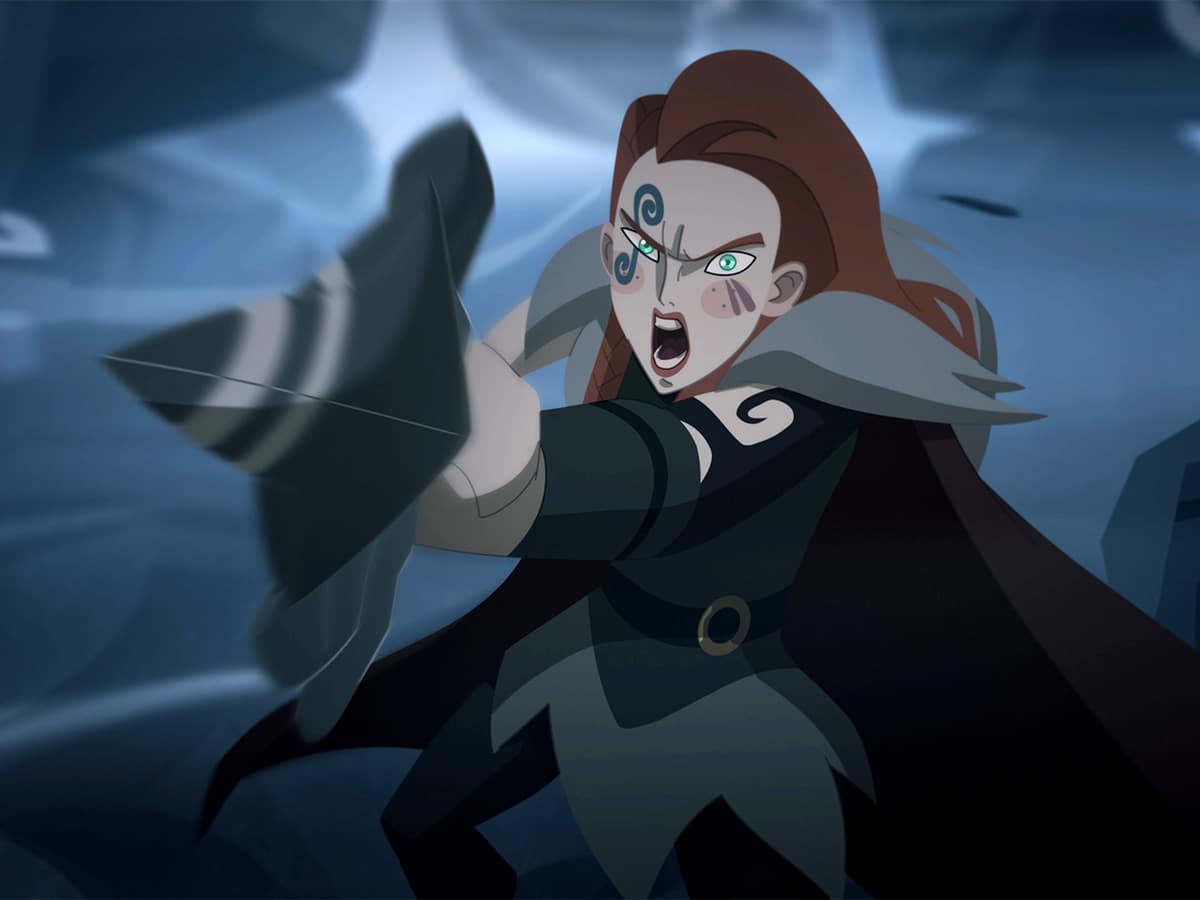
This stands out as a project that will help adults think about animation differently. Culture often regulates animation into a kiddie category, but there’s an entire arena available for storytelling aimed solely at adults.
Zack Snyder: You have a show like Blue Eye Samurai – I love the show – but the animation is very sort of sophisticated and serious. What we went for was this really kind of storybook, mythological, graphic style that, I think, pushes your perception of what adult animation is. We really put the animation back in it, you know what I mean?
Wesley Coller: I think with that particular style too, it’s simple and beautiful, but it also gives space for these characters and these stories to transpire. It’s all happening on this beautiful, simple, 2D environment and background. I think it allows the story and performances to really sit at the forefront of experience.
What discoveries did you make throughout the development process for the visual design of the show?
Zack Snyder: At Stone Quarry, we had our own in-house animation team that we hired. All the designers were [brought in] as part of the company to make and create the design. We went through a super long development.
Deborah Snyder: It’s a long process…
Zack Snyder: Easily four months, or longer really, of everybody submitting concepts and designs, with me briefing, and then going back to the drawing board again – before we really landed on this version, where we were like, “Okay, that’s it! Now we found it.” It was quite a process. We definitely earned our animation style through a crucible of drawings.
Hans Zimmer is a music god. How important is music to the storytelling and the mythology of this series?
Deborah Snyder: We have worked with Hans on many projects. He and his team – because we had Steven Doar and Omer Benyamin with us as well – always dig into the mythology or whatever it is, and try to find the origins of what you’re trying to communicate. We had a bunch of conversations prior. We showed them a bunch of the art. I think it was really important for us to say, “This is animated, but we want the music to be as serious as it would be if it were live-action. We don’t want that to influence what the music is, but we want it to support the narrative and the characters and the mythology.”
They’re just amazing. Zack had some ideas, and then Hans came back with some really traditional music that fit this Norse world and all these other ideas. There was a lot of discussion before they got down to composing. And then the way that Hans works is, they come up with themes for the show and then from the themes, they start composing the music for the actual episodes. It was a pleasure working with them and they were so spot on. I think if anything, Zach was like, “You can go a little weirder!” We used some traditional instruments too. I think we were really in sync with what they were doing and I think that the score is so rich. It really makes the pictures come to life.
Zack Snyder: And you can pick up your copy of the album soon. Pre-order your vinyl! The design of the album is really beautiful.
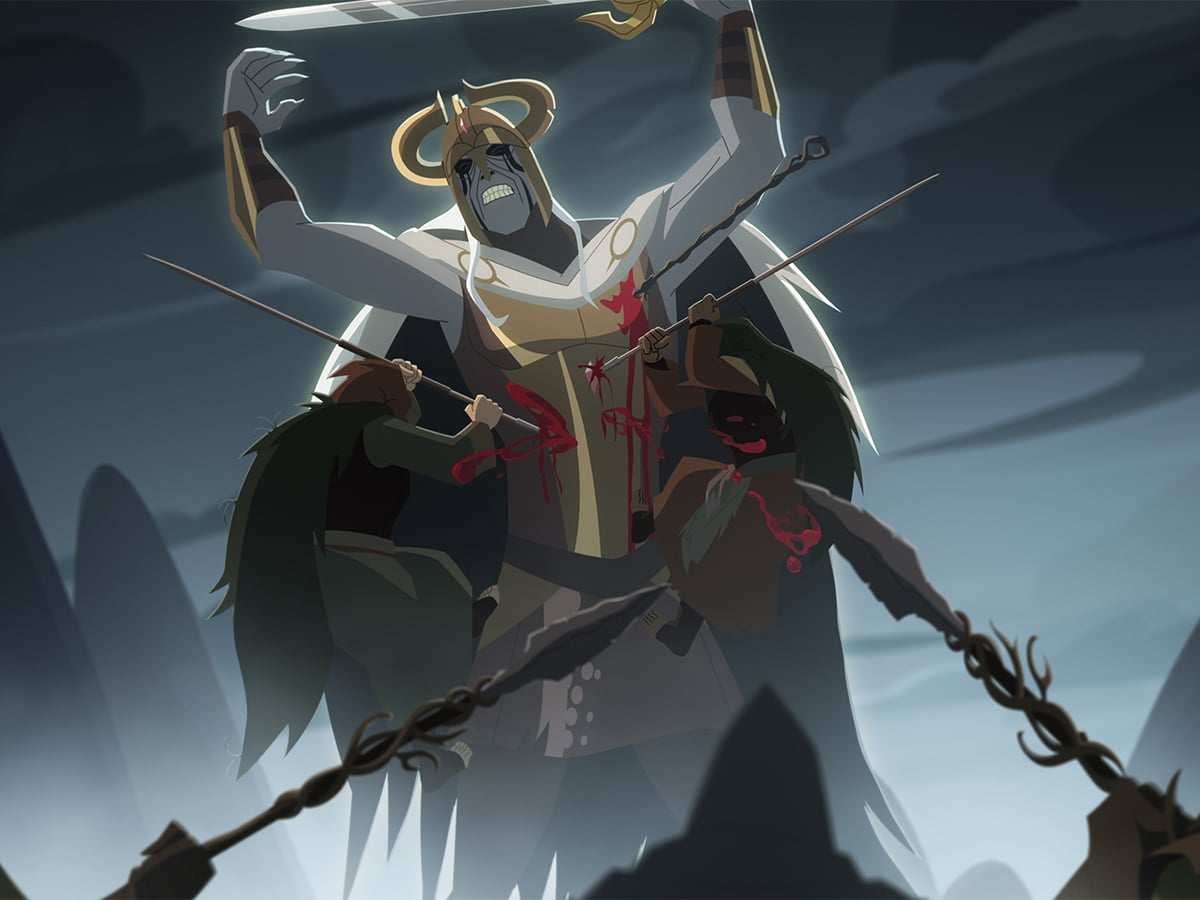
Prior to this project, what was your background with or experience of Norse mythology? When did you first encounter this world and how did that perhaps tie into this project?
Wesley Coller: I come to it from more of the pop culture point of view. The real joy of the project for me was the learning process. One of our writers, Peter Aperlo, wrote a book on Norse mythology, and is, you know, just an expert in that space. Obviously, Zack brings a lot of knowledge to it, and Jay as well, and so for me, it was getting to come to it with my pop culture exposure to Norse mythology over a lifetime, but then I really got to be surrounded by people who have a scholarly understanding of it: to get to go on that journey and become a student of the mythology as it exists. And then, [figuring out] how we are going to put forth our story onto the world. It was just a really enjoyable endeavour for me.
Deborah Snyder: I took this class in college called ‘Myth in Media’. It touched upon it, but not in such a detailed manner as when we started developing this – when you start doing the deep dive into the stories – and talking about the possibilities of stories. We ended up with this one, but there were a lot of ones that we talked about and explored. I think I really got more of an understanding, actually, through the process of making this than I did through either pop culture or the class I took in college. That was really fun and I hope that the audience has the same experience, because I think everyone lives on the fringes of it – if you like watching movies, if you play video games. Seeing this represented in a more traditional way is going to expose a lot more people to the actual stories.
Zack Snyder: I was a big fan of Norse mythology. I took a mythology class in high school that dealt with a bunch of different myths. One of the sections was all about Norse mythology. I really was like, “Wait, what? This is amazing. This is crazy.” It really sparked my imagination, as you can imagine, and has been a passion for the rest of my adult life. When I got this opportunity, it seemed like a really awesome realisation of that passion. And frankly, I’ve learned so much since. I thought I knew [about Norse mythology], but I didn’t know anything, apparently. I thought it was weird, but it’s a hundred times weirder…
From Stone Quarry Animation, Twilight of the Gods is co-created by Zack Snyder, Jay Oliva and Eric Carrasco and executive produced by Zack Snyder, Deborah Snyder, Wesley Coller and Jay Oliva. Zack Snyder directs the first and final episode. The animation house is Xilam Animation. You can catch the series streaming now on Netflix.
